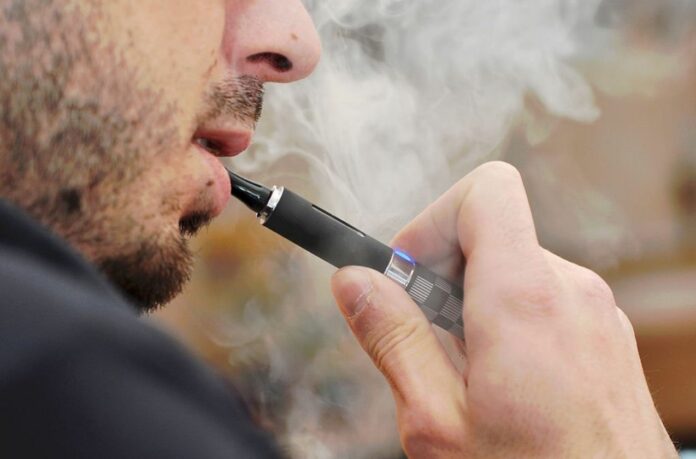A new study by researchers at George Washington University published in the journal Tobacco Control found that most adults who smoke cigarettes and vape are likely to keep smoking or keep doing both in the long run.
The researchers conclude that vaping does not seem to help smokers stop more easily at the population level, emphasizing the need to assist dual users quit both products.
Evidence shows that vaping and smoking at the same time are dangerous and common. However, it is unclear how each product is used over time or how the potential interactions between different patterns of usage could play out.
To find out, the researchers looked at 545 dual users from waves 1 through 5 of the US Population Assessment of Tobacco and Health (PATH) Study, which ran from 2013 to 2018.
Participants had to be dual users at wave 1 in order to be included in this study. This entailed being a current established vaper, defined as having ever used an e-cigarette, using fairly regularly, and using every day or some days; and a smoker, defined as having ever smoked a cigarette, smoking more than 100 cigarettes to date, and smoking every day or some days.
The researchers examined background demographic information, such as race and ethnicity and level of education, as well as data on behavioral factors, such as the frequency of nicotine, alcohol, and cannabis use, as well as perceptions of the harm that vaping poses in comparison to smoking conventional (combustible) cigarettes.
The smoking and vaping habits of participants were then monitored at each of the PATH Study’s four waves.
At wave 1, slightly more than half of the sample was between the ages of 25 and 44, 54% were male, 77% were non-Hispanic white, and 57% had attained at least a bachelor’s degree.
The daily cigarette and vaping use rates were 76% and 33.5%, respectively. Alcohol consumption was 62.5% and cannabis use was 25%. The majority (81%) believed vaping to be less dangerous than smoking.
The number of people who vaped dropped over the first four waves, from 59% in wave 2 to 35% in wave 4, but then rose to 41% in wave 5. Smokers made up a smaller part of the population, but the decline was slower and more gradual: 87% by wave 2, 81% by wave 3, 77% by wave 4, and 68% by wave 5.
The researchers then put the people into groups based on how long they had been smoking and vaping. Vapers showed two patterns over time, while smokers showed three.
The majority of vapers (66%) were classified as “early quitters,” or those who were most likely to give up by wave 3. The last third of participants were “stable users,” who continued vaping throughout.
The majority of smokers (55%) were stable users who continued to smoke; 27% were “gradual quitters,” or those who weaned themselves off cigarettes gradually over all waves. And 17.5% of smokers were early quitters, those who were most likely to give up by wave 3.
Nearly half of participants (42%), on average, stopped smoking but continued to vape early; only 10% of individuals quit both smoking and vaping early; and 15% of dual users continued to use both products throughout the course of the six-year study.
Influential factors during wave 1 were the prevalence of smoking and vaping, nicotine dependency, usage of cannabis, and other tobacco products. Dual users who smoked less often in the first wave were more likely to cease both items simultaneously or gradually.
As the researchers point out, this is an observational study, and product usage was not biochemically validated but rather relied on self-report. Additionally, there was no data available regarding product usage in between waves.
However, they note that their results “suggest that smoking reduction could help dual users to quit using both products; additionally, for those smokers unable or unwilling to quit using nicotine, cutting down on smoking could help them switch to exclusive [vape] use.”
Additionally, their findings imply that “before 2019, [vaping] did not contribute to substantial smoking cessation at the population level.”
However, they add that, “continued monitoring of trajectories and their predictors is warranted considering the rapid evolution of the [vaping] marketplace.”
Source: 10.1136/tobaccocontrol-2022-057405
Image Credit: Getty
